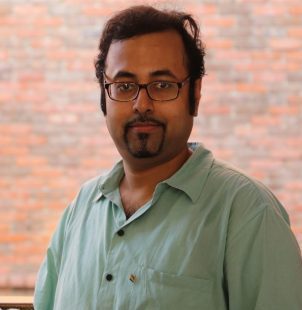How do we approach a visual image and decipher its meanings? What did early paintings in cave and rock shelters mean? What do images on Tutankhamun’s sarcophagus tell us about the society of ancient Egypt? How did Mesopotamian and Assyrian art forms inform the art of classical and Hellenic antiquity? Why is ‘Venus de Milo’ considered as an idealized form of feminine beauty? How did the rise of Christianity shape the figure of the Madonna? What role did visual narratives play in the spread of world religions like Buddhism? How do we account for ‘erotic’ sculptures in pre-modern Hindu temples? What are the cultural dialogues between Byzantine art and early Islamic art? Do all images become works of art? How do we distinguish between an artifact and a work of art? Why does a select body of objects and images emerge as masterpieces? Why is Leonardo da Vinci’s Mona Lisa considered as a masterpiece? How do we read Michelangelo’s David?
How does Art History enable us to read images? What role does formal analysis of style, form, and media play in our encounters with visual arts? Did the introduction of oil on canvas revolutionize our perception of the visual field? What is so captivating about Johannes Vermeer’s ‘Girl with the Pearl Earring’ and Rembrandt’s ‘The Night Watch’? Can we trace social, political, and historical processes at work in the making of some images into works of art? What sets apart an artist from an artisan? What constitutes the ‘aura’ of art? Should we read works of art as reflections of individual creative (artistic) genius or place them within a wider history of available technique, style, materials, media, patronage, market, connoisseurship and display? How do sites of encounter, museums, art galleries, and other spaces of visual simulation, frame our understanding of art works? Can Art emerge as a language of protest?
Seeking to address these questions, this course introduces some of the critical objects, images, and texts across a range of material media and sites in the field of Art History and Visual Culture. The approach is partly historiographical and partly analytic. Readings will be drawn from key texts by major aesthetes, art critics, and art historians and will concentrate on specific images and objects from civilizations of the distant past to our present times across various parts of the globe. Class discussions will be supplemented by visits to local galleries and museums. We will specifically focus on the questions of the adequacy of established art-historical paradigms of formal, stylistic, and iconographic analysis in dealing with the ‘expanded field’ of visual studies today. The course will end by exploring the rise of visual culture as a field of studies and question the apparent displacement of studies of ‘the object’ by studies of ‘the image’ in the visual field.





